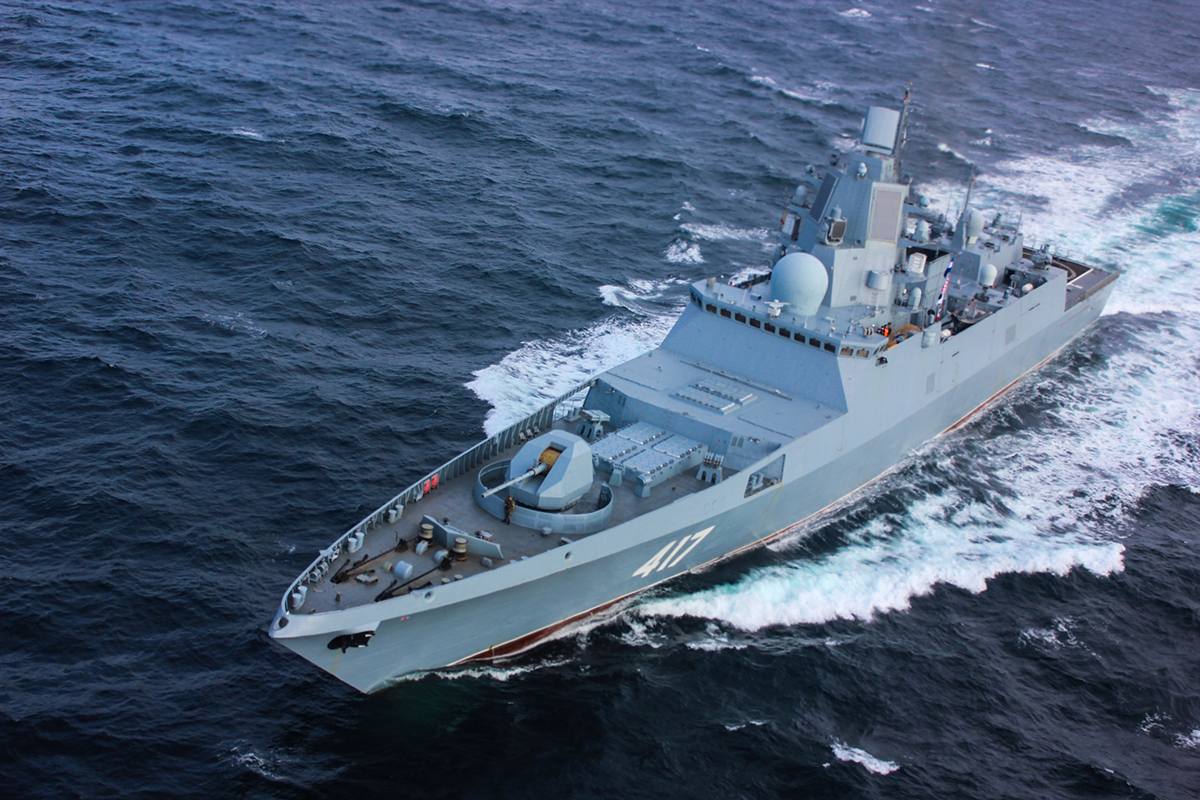Days after the brand-new frigate Admiral Gorshkov was flagged off by the Russian Defense Minister Sergei Shoigu to set sail for the Atlantic, Moscow announced that the vessel transited through the strategic English Channel.
The Russian Northern Fleet announced in a press release that the Tsirkon (or Zircon) hypersonic missile-equipped Admiral Gorshkov successfully sailed through the English Channel to carry out its assigned duties in the Atlantic Ocean.
“Today, the Northern Fleet’s frigate Admiral of the Fleet of the Soviet Union Gorshkov completed its passage through the English Channel southwards and yesterday transited its narrowest part, the Strait of Dover.
The Russian warship will subsequently continue its movement in accordance with its deployment plan,” the press office said in a statement.
⚡️The Russian frigate "Admiral Gorshkov" with "Zircons" on board passed the English Channel
— War Monitor (@WarMonitors) January 12, 2023
According to reports in the British media, the Royal Navy escorted the frigate Admiral Gorshkov as it went across the North Sea in a southerly direction. Meanwhile, the Russian cruiser and a towed tanker, Kama, were being watched by the Royal Navy Type 23 frigate HMS Portland as they approached the UK.
The English Channel is a significant sea route as it is a narrow arm of the Atlantic Ocean that separates Britain from Europe and tapers eastward to the North Sea. The Channel has been a crucial factor in the military wars involving Britain, acting as a natural defense for the island nation and a means of blockading the mainland.
According to the UN Convention on Law of the Seas, foreign ships are allowed to pass through the waters of any coastal country so long as they don’t threaten the security of that state.
However, the passage of a Russian vessel armed with hypersonic missiles while tensions boil between Moscow and the West is significant.
Earlier, a top Russian commentator Dmitry Kiselyov threatened two nuclear strikes on the UK – once by air and once by sea, creating bluster and hysteria. In addition, the warship is armed with hypersonic missiles that could not be intercepted even by the most advanced missile defense systems in the West.
The multi-purpose hypersonic missile is designed to strike sea and ground targets and can travel at Mach 9 (11,113 kilometers per hour).
??????The Russian frigate "Admiral Gorshkov" with "Zircons" on board passed the English Channel yesterday
In the NATO photo from January 9, a frigate and a tanker follow together in the North Sea under the watchful eye of the British Navy frigate HMS Portland. pic.twitter.com/botjNkirRS
— AZ ???? (@AZgeopolitics) January 12, 2023
The Royal Navy monitored the entire transit closely. The commanding officer of HMS Portland, Commander Ed Moss-Ward, said, “Escorting the Russian task group alongside forces from our NATO allies has demonstrated the UK’s commitment to the alliance and maintaining maritime security.”
Last January, when fears of an invasion of Ukraine were running high, a group of Russian amphibious warfare vessels passed through the English Channel. At the time, it was anticipated that the journey of the vessels would eventually take them to the Black Sea to launch an invasion.
Further, Admiral Gorshkov’s transit through the Channel is not the first time a Russian vessel has transited close to the United Kingdom since the invasion of Ukraine began in February 2022. In September last year, Russian cruiser Marshal Ustinov, destroyer Vice-Admiral Kulakov and tanker Vyazma passed through the Channel.
It is pertinent to note that Western military commentators have labeled the frigate’s far-sea voyage as a Russian attempt at power projection in waters away from the homeland and closer to the West.
Russia’s Hypersonic Armed Vessel Hogging Limelight
On January 4, Russian frigate Admiral Gorshkov armed with the Tsirkon (Zircon) hypersonic missile, set sail to travel across the Atlantic Ocean, Indian Ocean, and the Mediterranean Sea. At the time, Russian President Vladimir Putin said it was the first Russian warship to have hypersonic missiles and described the launch as “an important and even a landmark event.”
According to reports, the battleship has traveled 2,000 nautical kilometers since leaving Severomorsk, the major naval base of the Northern Fleet. The frigate will participate in several drills alongside other Russian Navy warship fleets and warships from other navies.
As previously reported by EurAsian Times, the frigate conducted training operations in the Norwegian Sea days after being flagged off by Russia.
The drill primarily focused on defense against enemy air attack weaponry, aircraft, and anti-ship missiles using a computer simulation of the tactical environment.

The Admiral of the Fleet of the Soviet Union Gorshkov is the Project 22350 lead multi-purpose frigate designed to operate in distant waters. The Kalibr-NK missile system is the primary striking armament aboard Admiral Gorshkov. The battleship actively participated in the testing of Russia’s ground-breaking Tsirkon (Zircon) hypersonic missile.
Since its voyage began, Admiral Gorshkov has been in the headlines. As per plans, the vessel will also sail through the Mediterranean Sea and the Indian Ocean after its designated tasks are completed in the Atlantic Ocean.
- Contact the author at sakshi.tiwari9555 (at) gmail.com
- Follow EurAsian Times on Google News




